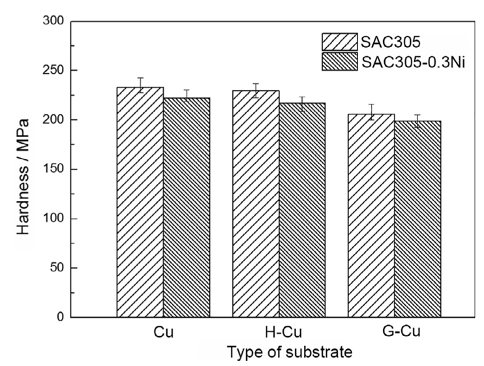Soldering Performance of SAC305 Solder Paste on Different Cu Substrates_Shenzhen Fitech

Soldering Performance of SAC305 Solder Paste on Different Cu Substrates_Shenzhen Fitech
SAC305, as a widely used lead-free solder, has excellent mechanical strength, conductivity, and thermal conductivity. The copper substrate is one of the most common substrate materials, so the soldering effect of SAC305-type solder on the copper substrate is of great concern. For lead-free solder joints, the interface reaction between the solder and substrate is the key factor affecting soldering reliability. Usually, SAC305 solder paste reacts with Cu substrate during heating to generate Cu6Sn5 IMC. To achieve excellent solder joints, some process treatments can be carried out on the Cu substrate to control IMC growth. This article will discuss the soldering effect of SAC305 on different Cu substrates.
Experimental processes
Li et al. selected two Cu substrate treatment methods, including heating the Cu pad under atmosphere protection at 1000°C (H-Cu) and coating the Cu substrate with graphene (G-Cu). Subsequently, they melted SAC305 and SAC305-0.3Ni into 1.6mm diameter solder balls. Finally, SAC305 and SAC305-0.3Ni solder balls were heated at 260°C for 60s to bond with Cu, H-Cu, and G-Cu substrates.
Experimental results
IMC structure
For Cu, H-Cu, and G-Cu substrates, Cu6Sn5 is the main IMC type. The Cu6Sn5 layer on the H-Cu substrate is thicker and smoother than the Cu6Sn5 layer on pure Cu substrates, which is because the structure of the Cu substrate changes from a polycrystalline structure to a single crystal structure after high-temperature treatment. The single crystal structure will affect the roughness of the Cu6Sn5 layer. In addition, the thickness of the Cu6Sn5 solder layer on the G-Cu substrate is lower than that of the other two substrates. The graphene-coating on the G-Cu substrate can not only slow down the oxidation of the metal surface but also partially inhibit atomic diffusion.

Figure 1. Interfacial IMC between SAC305 on Cu substrate. (a)Cu substrate; (b)H-Cu substrate; (c)G-Cu substrate.
After adding 0.3wt% Ni in SAC305, the interfacial IMC changes from Cu6Sn5 to (Cu, Ni) 6Sn5. The thickness of the (Cu, Ni) 6Sn5 layer on the Cu substrate is greater than that of Cu6Sn5 in Figure 1 (a). The thickness of the (Cu, Ni) 6Sn5 layer on H-Cu is thinner than on the Cu substrate. In addition, the IMC layer on the G-Cu substrate is thinner than the IMC layer on the other two substrates. Overall, SAC305-0.3Ni will form more IMCs than SAC305.

Figure 2. Interfacial IMC of SAC305-0.3Ni on Cu substrates. (a)Cu substrate; (b)H-Cu substrate; (c)G-Cu substrate
The hardness of solder layer
The average hardness of SAC305 solder on Cu substrate is the highest, followed by that of solders on H-Cu and G-Cu substrates. Compared with the microstructure of SAC305 eutectic solders on Cu and H-Cu substrates, SAC305 eutectic solders will form more on G-Cu substrates β- Sn and lower eutectic phase concentration. Due to β- The hardness of Sn is relatively low, and the hardness of SAC305 solder on the G-Cu substrate is the lowest. In addition, due to the effect of Ni additives on refining grains and suppressing eutectic phases, the hardness of SAC305-0.3Ni solder is lower than that of ordinary SAC305.

Figure 3. The hardness of SAC305 and SAC305-0.3Ni solders.
Fitech's solder paste
Fitech has rich research and development resources and instruments for producing solder pastes and can provide customers with various customized solder paste products, such as SAC305 and SnBi57.6Ag0.4. Besides, Fitech can optimize the reflow profile and provide soldering process improvement suggestions for customers. Welcome customers to cooperate with us.
Reference
Li, S.L., Liu, Y., Zhang, H., Cai, H., Sun, F.L. & Zhang, G.Q. (2018). “Microstructure and hardness of SAC305 and SAC305-0.3Ni solder on Cu, high temperature treated Cu, and graphene-coated Cu substrates”. Results in Physics, vol.11.

















 Back to list
Back to list



